Spanning 53,179 square miles, Arkansas is a landlocked state in the south-central region of the United States. It is home to both rugged mountainous regions as well as rich and fertile lowlands. Amongst these lowlands is the Mississippi Alluvial Region which includes many swamps and wetlands. The moist habitats are perfect for many animals, including alligators. These freshwater habitats are prime areas for alligators that thrive in these areas, and some can reach incredible lengths. But just how big can they get? Join us as we discover the biggest alligator ever found in Arkansas!
How Big Do Alligators Normally Get?
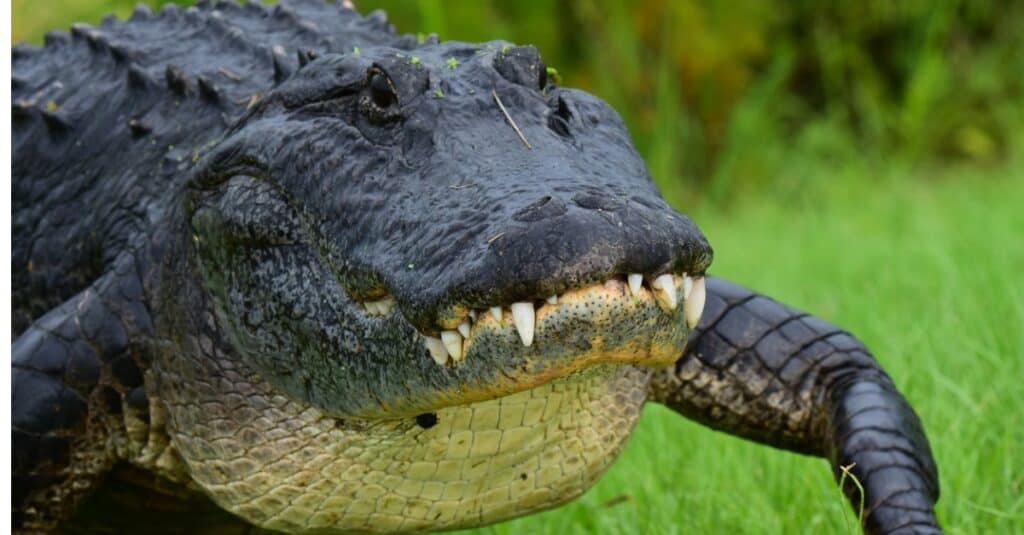
The largest alligators are usually the oldest males.
©iStock.com/cturtletrax
Alligators are large, powerful reptiles from the family group Aligatoroidae which also includes caimans. They are distinguished by their dark olive or black bodies and white bellies, along with their broad snout, which sets them apart from crocodiles. Alligators are native to only China, Mexico, and the United States.
There are currently two living species – the American alligator and the Chinese alligator. The Chinese alligator is critically endangered and is the smaller of the two species. Chinese alligators reach only between 5 and 7 feet long and weigh only 80 to 100 pounds. Despite this, American alligators can reach much, much larger sizes. They typically range between 11 and 16 feet long, but some can be longer still. The largest alligator ever was a 19ft 2in long alligator caught on Marsh Island, Louisiana, in 1890. The largest alligators are also incredibly heavy, with reports of anything from 1,000 up to a massive 2,000 pounds being recorded. Males are bigger than females, and size is generally related to age, with the oldest males being the longest and the heaviest.
Alligators are highly territorial and typically live in freshwater environments such as swamps, marshes, ponds, lakes, and rivers. Alligators are actually incredibly important to the ecosystem. This is because they make “alligator holes,” which create new habitats. Alligator holes are new small ponds that the alligators make by excavating vegetation using their feet and snouts. These new ponds are then new habitats for other animals and help to increase plant growth and diversity.
What do Alligators Eat?
Alligators have between 74 and 80 teeth which change as they get older. Young alligators start out with needle-like teeth, which they use to prey on small animals such as insects, crustaceans, and fish. However, as alligators age, their teeth become stronger and more robust, which allows them to prey on much bigger animals. Older alligators prey on turtles, fish, birds, and mammals all the way up to the size of deer.
Despite their size, alligators can move extremely quickly in short bursts – up to 35mph! They are ambush predators, and this means that they can quickly seize their prey as soon as the opportunity arises. Smaller animals are usually grabbed and swallowed immediately, while larger prey is usually dragged into the water and drowned. Although alligators have a lot of teeth, they are ill-suited to biting chunks off and chewing. Therefore, alligators perform a “death roll” with larger prey. The death roll consists of the alligator rolling and spinning while holding the prey so that smaller, bite-sized chunks are torn off.
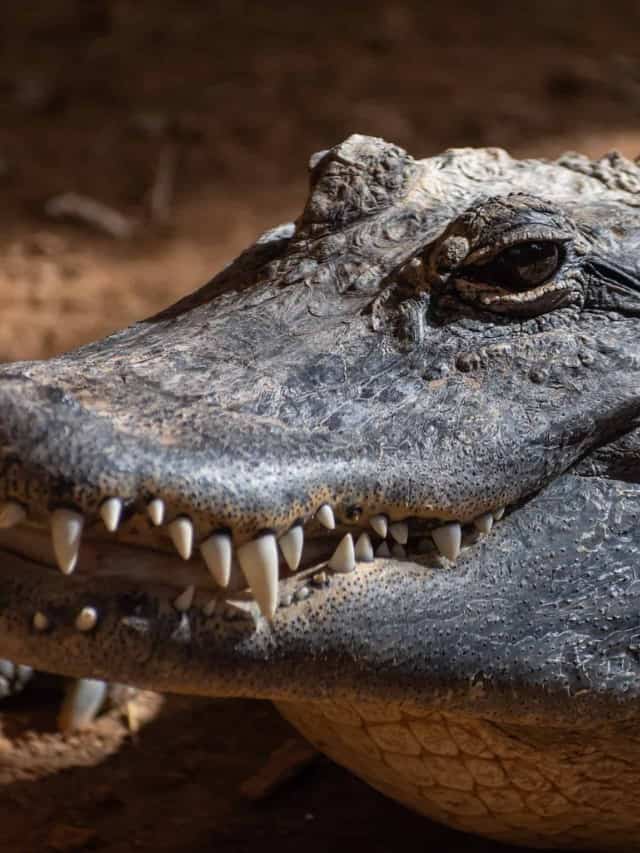
Alligators prefer warm climates.
©iStock.com/CoinUp
Habitat
Alligators are found primarily in the southeastern United States, from North Carolina to Texas. They inhabit freshwater environments such as lakes, rivers, swamps, and marshes, though they can also be found in brackish water.
Alligators prefer warm climates and rarely venture far north of the Virginia-North Carolina border. During colder months, alligators will burrow into mud or construct a mound of vegetation to keep warm. Though they may travel some distance over land in search of food or mates, alligators typically remain within a few miles of their home territory throughout their lives.
The Biggest Alligator Ever Found in Arkansas
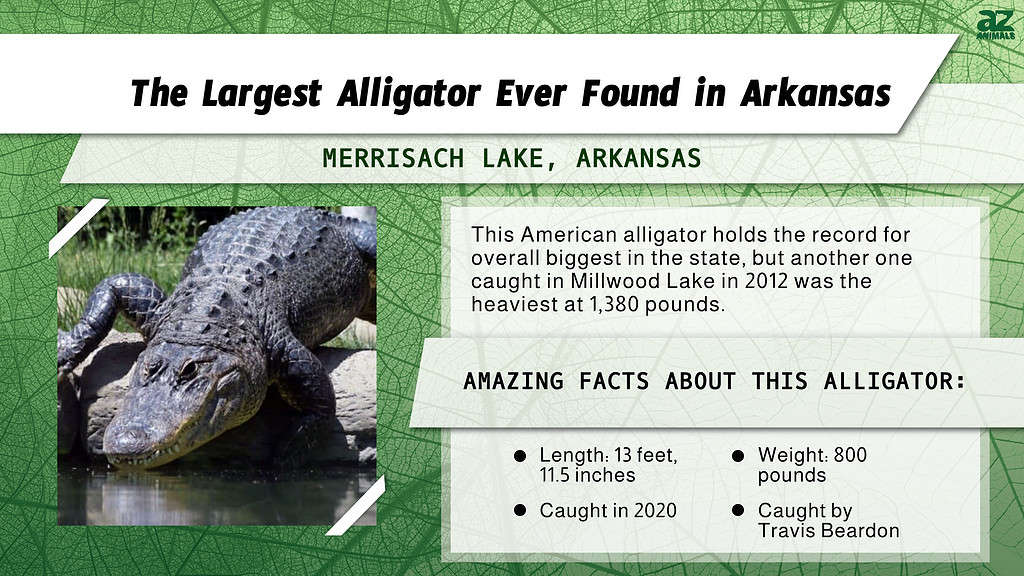
The biggest alligator ever found in Arkansas was a half-inch shy of 14 feet long and weighed around 800 pounds. Caught in Merrisach Lake in September 2020 by alligator hunter Travis Bearden, the massive alligator beat the previous record set in 2015 by almost 2 inches. Alligators have been hunted seasonally in Arkansas since 2008 as a measure to control the population.
Alligator hunter Travis Bearden was hunting on the lake with his father, brother, and friend during the final weekend of the alligator hunting season when they spotted the large animal nearby. Knowing it was a big one, but not quite how big, they were excited about the catch. However, it wasn’t plain sailing as the fearsome beast towed their boat around the lake for two whole hours before they eventually managed to kill it. The frightening ordeal occurred after they harpooned it but were unable to get a clear shot to kill it immediately. The huge alligator dwarfed their boat and used its immense strength and power to drag it around while the terrified occupants were completely at its mercy.
When they did eventually manage to kill the beast, it soon became clear that it was a record-breaker. When it was brought ashore, the forklift that was used to lift it didn’t even lift high enough to get its entire length off the ground!
Heaviest Alligator in Arkansas
Incredibly, although Bearden’s alligator holds the state record as the biggest alligator ever found in Arkansas, it is not the heaviest. Instead, the heaviest alligator caught in Arkansas makes Bearden’s alligator seem like a mere baby in comparison. Caught in Millwood Lake in 2012, the alligator weighed a whopping 1,380 pounds! However, despite its immense weight, it wasn’t a record-breaker as it only measured 13 feet 3 inches long.
This huge alligator was a mature male which was estimated to be around 35 years old. When we look at its diet, it’s easy to understand just how it managed to get so heavy. It turns out that this alligator was literally eating the competition as its stomach contained a 5-foot-long alligator!
How Do Alligators Compare?
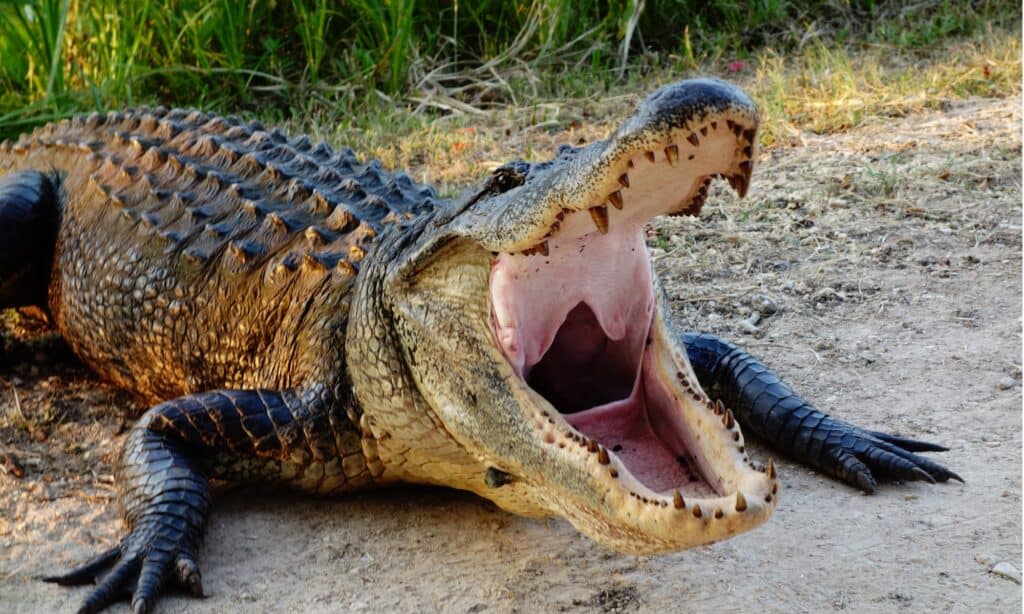
Extinct alligators were 35-foot-long apex predators!
©iStock.com/Alex Pankratov
As members of Alligatoroidae, alligators are also members of the order Crocodilia. This includes all alligators, true crocodiles, caimans, gharials, and false gharials, along with many extinct members. As we’ve already mentioned, the largest alligator ever found was 19ft 2in. This makes alligators significantly larger than caimans which reach a maximum of 13 feet long, and gharials which reach around 14 feet.
Although the size of crocodiles varies depending on species, alligators compare well against them. The largest species is the saltwater crocodile which can be more than 20 feet long, meaning that the largest alligators aren’t much smaller than them.
However, alligators today are much, much smaller than their prehistoric counterparts. Easily the largest and the most fearsome amongst a pretty terrifying bunch was Deinosuchus. Deinosuchus was an immense 35-foot-long alligator with a massive, wide skull and thick teeth. Deinosuchus lived 82 to 73 million years ago during the Cretaceous era and spent their time in brackish water. Fossilized remains have been found in 10 US states so far, with much more possibilities as yet undiscovered.
Although saltwater crocodiles have the largest bite force of animals alive today (16,460 newtons), Deinosuchus is estimated to have a bite force of up to 100,000 newtons. Their teeth were adapted for crushing rather than piercing prey, and they were capable of killing and eating even large dinosaurs. In fact, Deinosuchus was an apex predator and quite likely the most terrifying alligator to ever walk the earth.
Lifespan
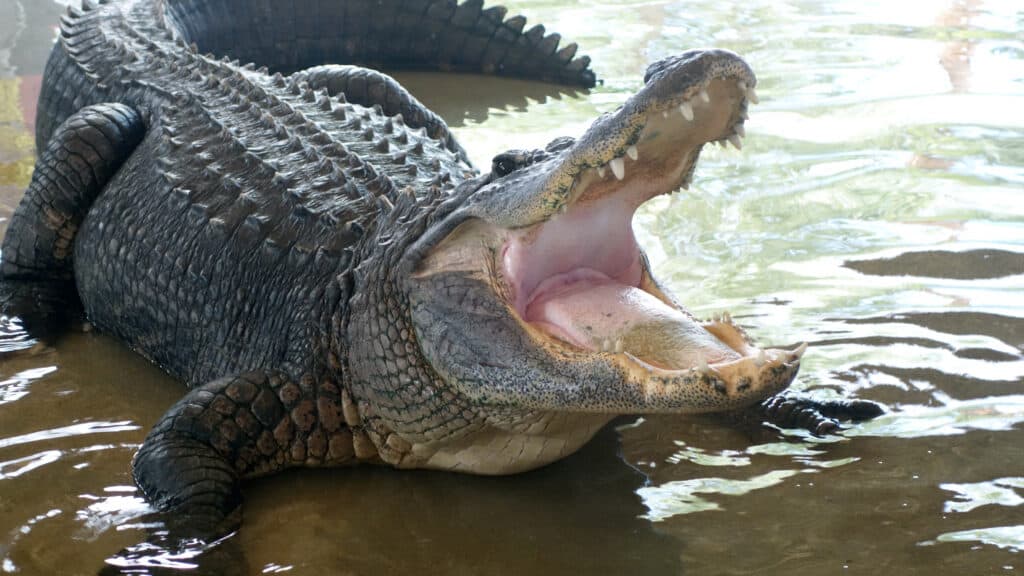
Alligators are capable of living for as long as 80 years or even longer in captivity
©Ernie Hounshell/Shutterstock.com
Alligators have a relatively long lifespan, with some individuals having been known to live up to 50 years in the wild. The average life expectancy of an alligator is typically around 30-50 years. Alligators can also reach great ages in captivity, with some living into their 70s and 80s. Factors like diet, exercise, stress levels, and environmental conditions can all impact an alligator’s lifespan. With proper care and nutrition, captive alligators may even be able to live past 100 years of age!
Conservation Status
Alligators currently face a number of threats, including habitat loss, pollution, poaching, and the exotic pet trade. As a result of these threats, their conservation status is considered vulnerable in some areas.
To help protect alligators from these dangers, many states have enacted laws to regulate hunting and trapping seasons, as well as limit the sale of products made with alligator parts. Additionally, numerous conservation efforts are underway to restore natural wetland habitats that provide critical refuge for alligators and other aquatic wildlife species.
Education initiatives also play an important role in encouraging people to be good stewards of this beloved species by teaching them about sustainable practices such as proper disposal of waste materials near waterways and avoiding contact with wild animals when possible.
The photo featured at the top of this post is © iStock.com/Bradley Proxmire
Thank you for reading! Have some feedback for us? Contact the AZ Animals editorial team.






